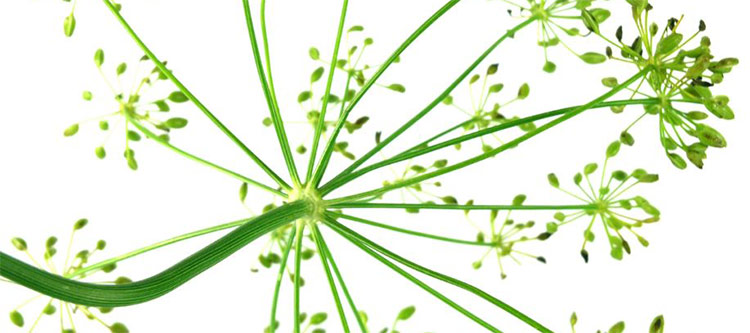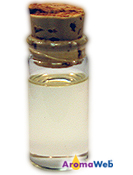Dill Seed Essential Oil
Anethum graveolens

Description
Dill Seed Essential Oil isn't a widely used essential oil within the scope of aromatherapy. However, it's an interesting and beneficial essential oil that deserves a second glance, especially for digestive issues.
Dill Seed Essential Oil is comprised primarily of (+)-carvone, a ketone. d-limonene, a monoterpene, is also a major constituent present within the oil. Please refer to the Uses section below for the potential applications of Dill Seed Essential Oil.
Aromatically, Dill Seed Oil possesses a slightly earthy, fresh, sweet, herbaceous aroma that blends well with essential oils in the citrus, spice, wood and herbaceous families.

Dill Seed Essential Oil Benefits and Uses
- Dyspepsia
- Flatulence
- Indigestion
- Bronchial Asthma
- Dysmenorrhoea and the Promotion of Lactation
Source: Salvatore Battaglia, The Complete Guide to Aromatherapy (Australia: The Perfect Potion, 2003), 287.
Botanical Name
Plant Family
Common Method of Extraction
Steam Distilled
Plant Part Typically Used
Color
Clear
Consistency
Thin
Perfumery Note
Middle
Strength of Initial Aroma
Mild - Medium
Aromatic Description
Dill Seed Essential Oil smells fresh, sweet, herbaceous and slightly earthy.
Major Constituents of Dill Seed Oil
- (+)-Limonene
- (+)-Carvone
- (E)-Dihydrocarvone
- a-Phellandrene
- (Z)-Dihydrocarvone
Source: B.M. Lawrence, Essential Oils 1988-1991 (Wheaton: Allured Publishing, 1995), 202. Source cited in Robert Tisserand and Rodney Young, Essential Oil Safety (Second Edition. United Kingdom: Churchill Livingstone Elsevier, 2014), 269.
Dill Seed Essential Oil Safety Information
Tisserand and Young agree with IFRA's 1.2% dermal maximum limit. They precaution that there is a risk of drug interaction when using Dill Seed Oil and that there is a greater risk of skin sensitization if using oxidized Dill Seed Oil topically. Reading Tisserand and Young's full profile is recommended. [Robert Tisserand and Rodney Young, Essential Oil Safety (Second Edition. United Kingdom: Churchill Livingstone Elsevier, 2014), 269.]
General Safety Information
Do not take any oils internally and do not apply undiluted essential oils, absolutes, CO2s or other concentrated essences onto the skin without advanced essential oil knowledge or consultation from a qualified aromatherapy practitioner. For general dilution information, read AromaWeb's Guide to Diluting Essential Oils. If you are pregnant, epileptic, have liver damage, have cancer, or have any other medical problem, use oils only under the proper guidance of a qualified aromatherapy practitioner. Use extreme caution when using oils with children and be sure to first read the recommended dilution ratios for children. Consult a qualified aromatherapy practitioner before using oils with children, the elderly, if you have medical issues or are taking medications. Before using this or any essential oil, carefully read AromaWeb's Essential Oil Safety Information page. For in-depth information on oil safety issues, read Essential Oil Safety by Robert Tisserand and Rodney Young.
Shelf Life
Important Information About the Profiles
The essential oil information provided on AromaWeb is intended for basic educational purposes only. The references to safety information, test results, constituents and percentages is generalized information. Essential oils can vary greatly in composition. The data is not necessary complete and is not guaranteed to be accurate. The essential oil photos are intended to represent the typical and approximate color of each essential oil. However, essential oil composition and color can vary based on harvesting, distillation, age of the essential oil and other factors. Profiles for several CO2 Extracts and absolutes are included within the directory, and are denoted as such.
